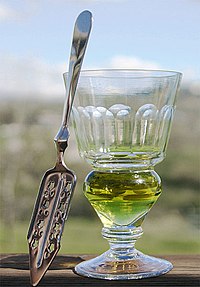
Photo from wikipedia
Background Artemisia weed pollen allergy is important in the northern hemisphere. While over 350 species of this genus have been recorded, there has been no full investigation into whether different… Click to show full abstract
Background Artemisia weed pollen allergy is important in the northern hemisphere. While over 350 species of this genus have been recorded, there has been no full investigation into whether different species may affect the allergen diagnosis and treatment. This study aimed to evaluate the variations in amino acid sequences and the content of major allergens, and how these affect specific IgE binding capacity in representative Artemisia species. Methods Six representative Artemisia species from China and Artemisia vulgaris from Europe were used to determine allergen amino acid sequences by transcriptome, gene sequencing and mass spectrometry of the purified allergen component proteins. Sandwich ELISAs were developed and applied for Art v 1, Art v 2 and Art v 3 allergen quantification in different species. Aqueous pollen extracts and purified allergen components were used to assess IgE binding by ELISA and ImmunoCAP with mugwort allergic patient serum pools and individual sera from five areas in China. Results The Art v 1 and Art v 2 homologous allergen sequences in the seven Artemisia species were highly conserved. Art v 3 type allergens in A. annua and A. sieversiana were more divergent compared to A. argyi and A. vulgaris . The allergen content of Art v 1 group in the seven extracts ranged from 3.4% to 7.1%, that of Art v 2 from 1.0% to 3.6%, and Art v 3 from 0.3% to 10.5%. The highest IgE binding potency for most Chinese Artemisia allergy patients was with A. annua pollen extract, followed by A. vulgaris and A. argyi , with A. sieversiana significantly lower. Natural Art v 1-3 isoallergens from different species have almost equivalent IgE binding capacity in Artemisia allergic patients from China. Conclusion and clinical relevance There was high sequence similarity but different content of the three group allergens from different Artemisia species. Choice of Artemisia annua and A. argyi pollen source for diagnosis and immunotherapy is recommended in China.
Journal Title: Clinical and Translational Allergy
Year Published: 2020
Link to full text (if available)
Share on Social Media: Sign Up to like & get
recommendations!